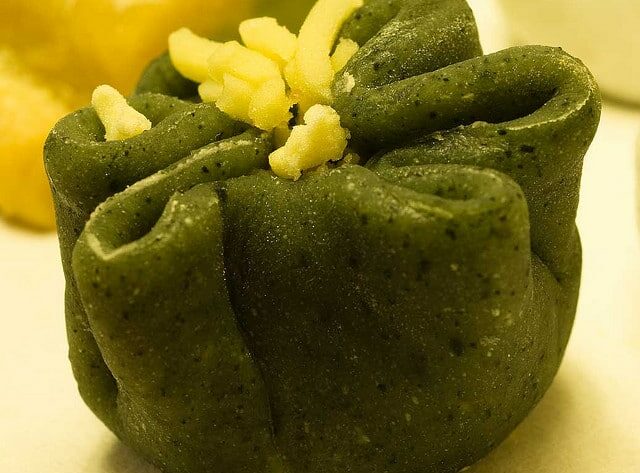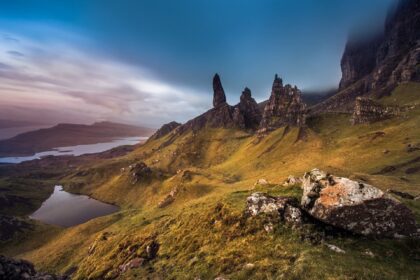
When ordering dessert in Japan, don’t expect fudge brownie sundaes or Snicker marshmallow cheesecake. Instead, you’ll more likely be indulging in some simple but delicious wagashi, or typical Japanese sweets. Often served with tea, these confectioneries are made with mochi, azuki bean paste and fruit and often have a soft, mold-able texture.
This shouldn’t be too much of a surprise, as Japan is an overall healthy society. In ancient Japan, people ate fruit and nuts to satisfy their cravings for sweets and add nutritional value to grains like rice and millet. What’s also interesting about wagashi is the part it plays in the traditional Japanese tea ceremony. The focus of the ceremony isn’t really about making tea, but about the aesthetically-pleasing manner in which the Teishu (tea host) prepares it. Moreover, it’s important to make guests feel welcome in accordance with the season. Wagashi not only adds sweetness to the palate to combat the bitterness of the green tea, but is also made to reflect the season, i.e. maple leaf shapes for fall and plum flower designs for spring. In essence, it’s not just a dessert, but an art.
Have you ever tried wagashi? What was it like?
Jessica Festa
Latest posts by Jessica Festa (see all)
- A Culturally-Immersive Adventure In Mongolia’s Altai Mountains - Jul 8, 2023
- This Recipe Sharing Platform Supports Women In The Culinary Industry (Labneh Recipe Included!) - Nov 5, 2020
- Hiking The Mohare Danda Community Eco-Trek In Nepal - Jun 3, 2020
- 6 Important Questions For Choosing A Responsible Yoga Retreat - May 18, 2020
- How To Create & Grow A Profitable Blogging Business (Ethically) - Jan 18, 2020





